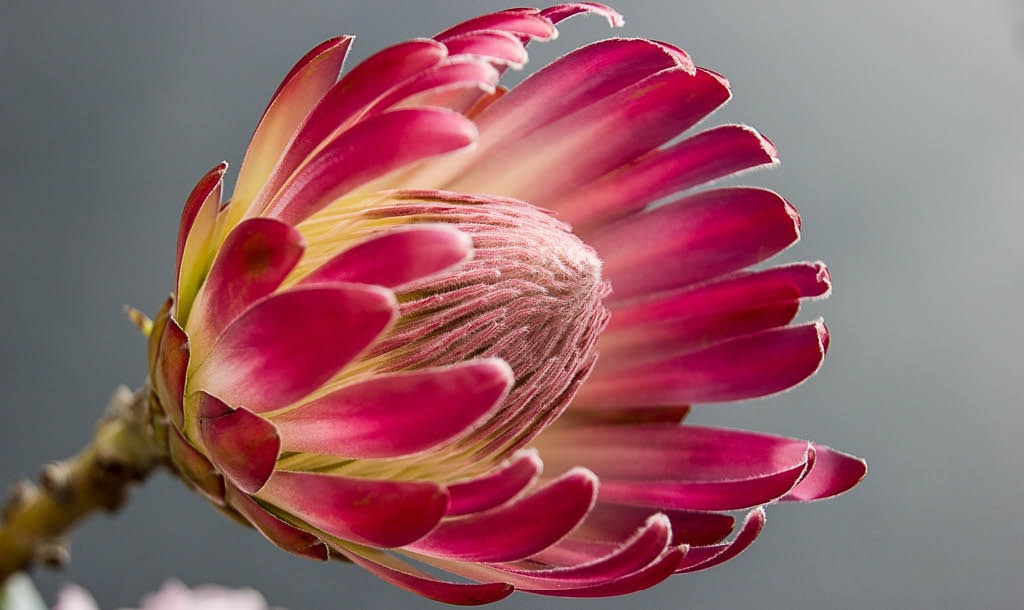
White Rhinoceros in Kruger National Park South Africa Art Deco WPA
South Africa's national flower. The king protea was named South Africa's national flower in 1976 and has been the proud emblem of many sports teams, clubs and groups in the country. Interestingly, this plant is also endemic to Australia and South America. Australia has the largest collection of species on the planet—over 850.

Premium Photo Leopard during sunset in the klaserie private nature
South Africa. The national flower of South Africa is the King Protea, Protea cynaroides. Tunisia The national. native trees with yellow cascading flowers) is usually regarded as the national flower. Other plant emblems are Koru (a curled fern symbol) and the crimson-flowered Pohutukawa (Metrosideros excelsa), also called New Zealand's.

Discover The National Flower of South Africa The King Protea AZ Animals
A plant taxonomic backbone for South Africa has been maintained electronically since the 1970s; originally in the custom-built National Herbarium, Pretoria Computerised Information System.

Africa's first floating gas plant arrives in Mozambique Business
Proteas, the most famous fynbos, include South Africa's national flower, the king protea. This plant appears on South Africa's coat of arms and, according to the South African government, was.

Protea national flower of south africa
South African Plants 24 Brilliant South African Plants (With Pictures) Plant Types / By Morgan Daniels / Leave a Comment / January 27, 2022 South african plants has stunning wildlife, amazing landscapes, and vibrant culture. Are you keen on bringing some South African beauty into your own space?! Contents show If so, you definitely can!

Lion Of African Origin Captured In Kruger National Park South Africa
The national flora of South Africa is actually the King Protea, the largest protea species! They come in various colours of purple, white and gold. Proteas bloom in fall, winter, and spring, but generally the plant is evergreen. Surprisingly, protea blooms grow well after wildfires, because their outer layer is scorched, causing latent buds to.

10 Fascinating Facts to Know About the Protea, South Africa's National Flower
23,420 species of vascular plant have been recorded in South Africa, making it the sixth most species-rich country in the world and the most species-rich country on the African continent.. The 2018 South African National Biodiversity Institute's National Biodiversity Assessment plant checklist lists 35,130 taxa in the phyla Anthocerotophyta.

1,413 South Africa Weeds Images, Stock Photos, 3D objects, & Vectors
Also called: National Botanic Gardens of South Africa, one of the world's largest botanical gardens, occupying a 1,305-acre (528-hectare) site in Kirstenbosch, near Cape Town, Western Cape province, South Africa. The 6,200-species collection consists almost exclusively of Cape plants native to the fynbos (scrubland) and forests of southern.

Traditional, Cultural Wedding at The National Museum of African
The VEGMAP Project is a large collaborative project that was established to classify, map and sample the highly diverse vegetation of South Africa, Lesotho and Swaziland. The components of the VEGMAP Project are fundamental tools used in environmental planning, conservation management, biodiversity assessment and research in South Africa. These components include: The flagship product of

King Protea or Protea Cynaroides the National Flower of South Africa. Stock Image Image of
The National Flower of South Africa: King Protea The King Protea is one of the 5 South African National symbols. The flower grows in areas with dry, hot summers and cold winters, on the well-drained, poor soil, exposed to direct sunlight The King Protea is widely distributed in the southwestern and southern parts of the fynbos region.

Elephant From The African Bush Spotted In Kruger National Park South
The national flower of South Africa: the king protea is also called the sugarbush or the cape artichoke flower. The Proteaceae family is one of the oldest flowering plant families on the planet. Fossils show they grew 300 million years ago!

String of Beads Plant A Guide to Growing and Caring for This Unique
The king protea (protea cynaroides) took the title of South Africa's national flower in 1976 The king protea, so called because of its resemblance to a crown, is the largest of all proteas and is found in the Cape Floristic region.

African Buffalo Grazing In The Kruger National Park South Africa Photo
Protea cynaroides, also called the king protea (from Afrikaans: koningsprotea, Xhosa: isiQwane sobukumkani), is a flowering plant.It is a distinctive member of Protea, having the largest flower head in the genus. The species is also known as giant protea, honeypot or king sugar bush.It is widely distributed in the southwestern and southern parts of South Africa in the fynbos region.

African Buffalo Roaming In Kruger National Park Of South Africa Photo
Plants of southern Africa: an online checklist provides access to plant names and floristic details for southern African plant species.. The South African National Biodiversity Institute (SANBI) contributes to South Africa's sustainable development by facilitating access to biodiversity data, generating information and knowledge, building.

king protea flower south africa Jeffries
The database currently comprises 206662 names of african plants with their nomenclatural statuts. Data capture, edition and broadcast are the product of a collaboration between the South African National Biodiversity Institute , the Conservatoire et Jardin botaniques de la Ville de Genève , Tela Botanica and the Missouri Botanical Garden. Data.

Premium Photo African rock python juvenile in the jungles of loango
The history of plant Red Lists in South Africa. South Africa has a strong history of conducting Red Lists, with three previous plant assessments: Hall et al. 2 assessed 1893 taxa in 1980, Hilton-Taylor 3,4,5 assessed 3916 taxa in 1997 and Golding 6 assessed 948 taxa in 2002. Despite including only a small proportion of the flora these.